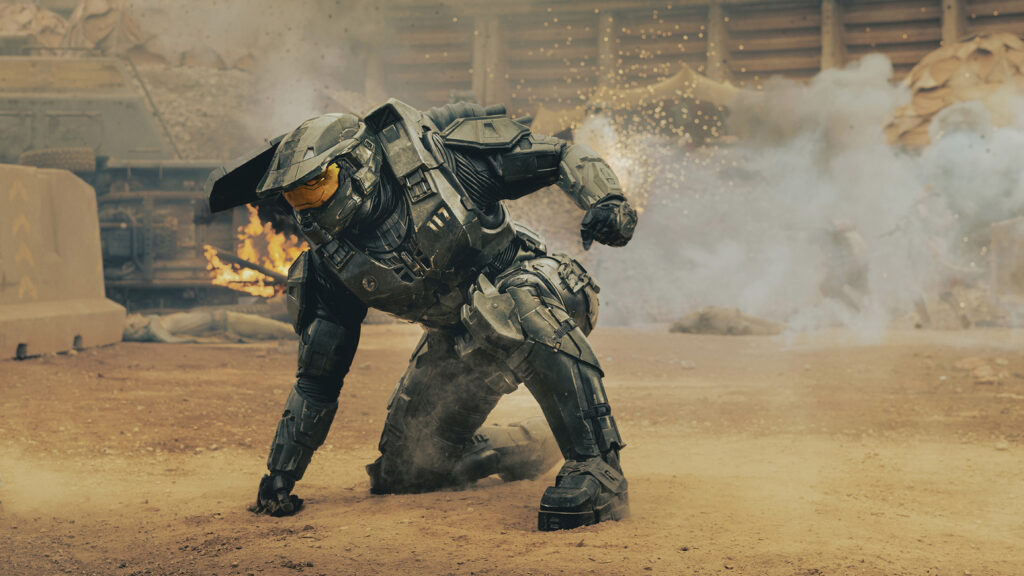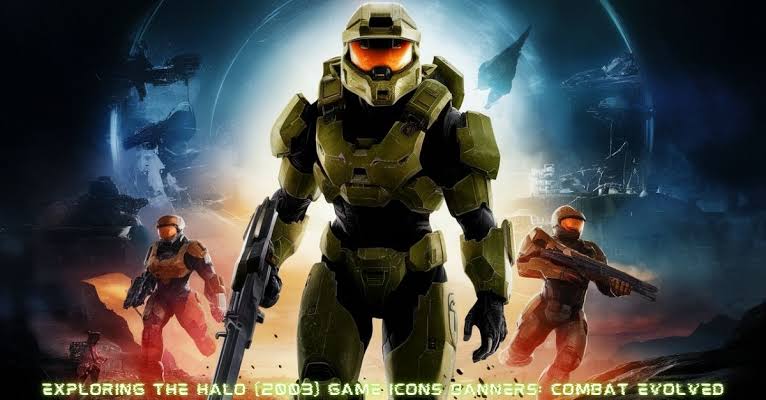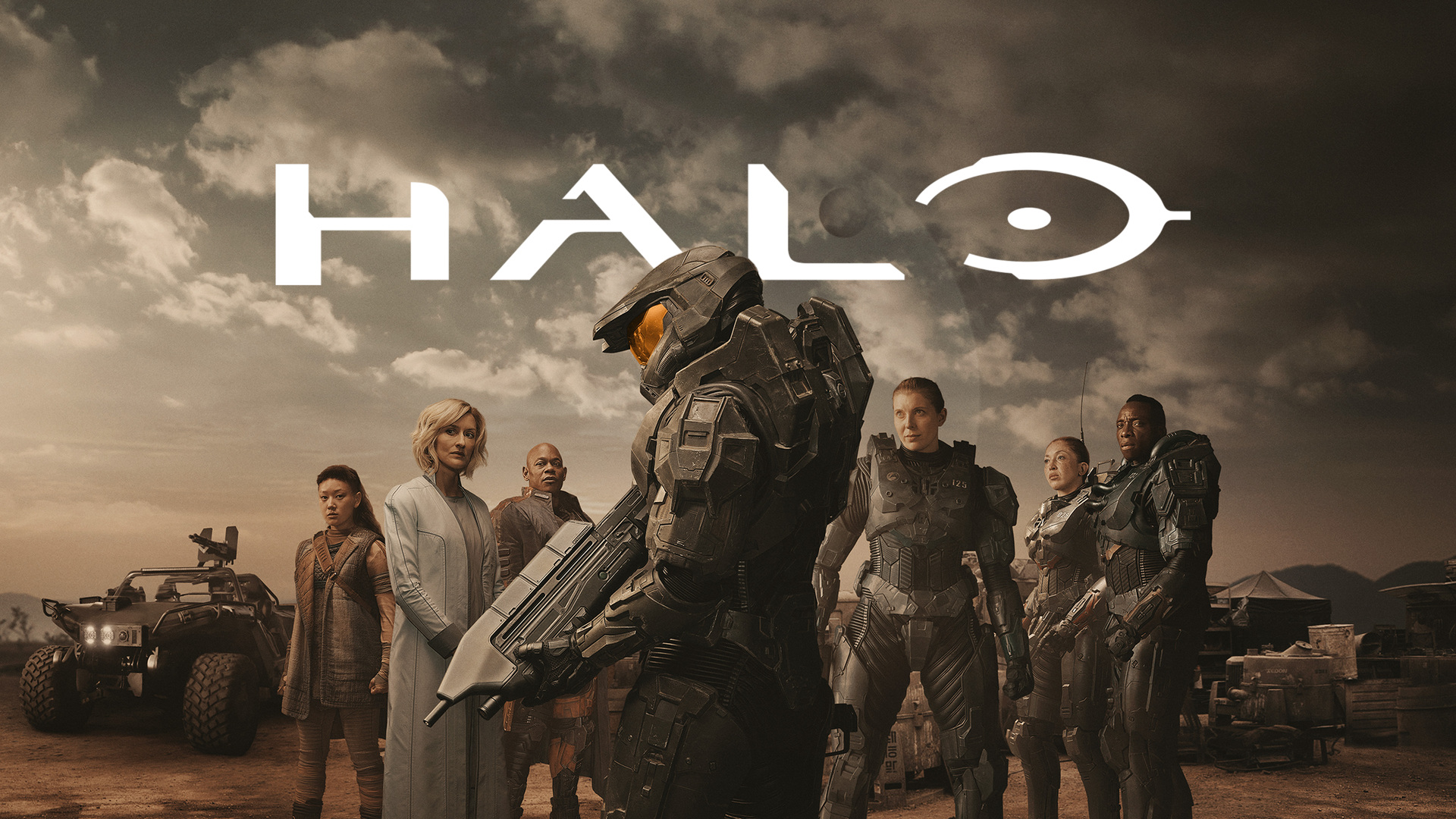The release of Halo (2003) game icons banners: Combat Evolved in 2001 marked the beginning of a groundbreaking era in gaming, but by 2003, the Halo franchise had already started to evolve in its visual presentation. Among the elements that set Halo apart were its Halo (2003) game icons banners, which played a significant role in defining its identity. These visual assets helped solidify the game’s connection with its players, enhancing its status as a gaming icon.
Table of Contents
The Role of Game Icons in Halo (2003)
Halo (2003) game icons banners were more than just decorative symbols; they were integral to the game’s immersive experience. These icons served to represent in-game items, vehicles, and objectives, providing clarity in the fast-paced world of Halo. From the instantly recognizable “Warthog” to the Spartan helmet, each icon was meticulously crafted to ensure it resonated with players, reflecting the game’s futuristic aesthetic.
Icons such as the Energy Sword and Assault Rifle became not only functional but iconic in their design. The sharp, sleek lines and distinct coloring of these icons made them easily identifiable, even in the heat of battle. They played a key role in guiding players, helping them make split-second decisions during gameplay. More importantly, these icons became part of the Halo legacy, remaining in the minds of players long after they had finished the game.

Banners: A Gateway to the Halo Universe
Banners in Halo (2003) were equally crucial. Whether in menus or promotional materials, these banners showcased the game’s visual identity and drew players into its universe. The use of deep blues, metallic grays, and subtle glows in these banners echoed the futuristic themes central to the Halo franchise.
Each banner was designed with precision, highlighting major elements of the game, such as Master Chief in his iconic armor or the menacing Covenant forces. These visuals weren’t just eye candy; they represented the tension, action, and adventure awaiting players. The banners provided a visual hook, drawing gamers in and holding their attention. Whether displayed on the game’s cover or during promotional campaigns, these banners effectively communicated the epic scale and intense atmosphere of Halo (2003).
The Impact of Visual Elements on Player Engagement
The importance of Halo (2003) game icons banners cannot be overstated when discussing Halo (2003). These visual elements had a direct impact on how players engaged with the game. The memorable designs of the icons enhanced the gameplay experience, while the banners served as a constant reminder of the game’s grand scale. Together, these elements fostered a sense of immersion and helped build a deeper connection between the game and its players.
Halo (2003) game icons banners weren’t just visually appealing—they embodied the spirit of Halo. The simplicity of their design made them instantly recognizable, yet their intricate details gave them depth and character. This combination of simplicity and detail made them perfect representations of the game’s themes of conflict, exploration, and survival in a futuristic world.
How Halo (2003) Redefined Visual Marketing
In the early 2000s, visual marketing in gaming was rapidly evolving, and Halo (2003) was at the forefront of this shift. The game’s banners were prominently displayed across gaming platforms, websites, and promotional materials. These banners served as a gateway into the Halo universe, sparking curiosity and excitement among players.
The success of these visual assets helped Halo stand out in a crowded market. The game icons became symbols of the franchise, appearing on merchandise, in fan art, and across various media platforms. This successful integration of visual elements into the game’s identity helped Halo (2003) maintain its relevance and appeal long after its initial release.
Legacy of Halo’s Visual Identity
The legacy of Halo (2003) lives on through its Halo (2003) game icons banners, which have left an indelible mark on the gaming world. Even today, the distinctive visuals from Halo are instantly recognizable, symbolizing the franchise’s enduring influence. The clean, futuristic design of these elements continues to inspire modern game designers, while fans cherish them as iconic symbols of the gaming experience they fell in love with.
The influence of these visuals can be seen in other franchises, with many games adopting similar approaches to their iconography and branding. However, few have matched the lasting impact of Halo (2003). Its Halo (2003) game icons banners set a standard for what visual design in gaming could achieve, proving that the smallest details can make the biggest difference.
Influence on Modern Game Design
The visual approach used in Halo (2003), especially its Halo (2003) game icons banners, has had a profound impact on modern game design. Many contemporary titles draw inspiration from the simplistic yet powerful design philosophy pioneered by Halo. This method of using minimalistic yet instantly recognizable icons has become a standard in the industry. Games today continue to use clean, sharp visuals to help players quickly identify items, characters, and objectives, much like the way Halo perfected this craft.

In addition, the banner designs from Halo (2003) set a new benchmark for promotional art. Developers across the gaming industry took note of how these banners captured the essence of the game and used them as a marketing tool. The attention to detail in the colors, composition, and subjects of the banners made them timeless, inspiring other game franchises to adopt similar strategies in their visual marketing campaigns.
The Enduring Popularity of Halo (2003) Icons
The Halo (2003) game icons banners have become legendary within the gaming community. The clean and futuristic aesthetic resonates even today, with fans and designers alike celebrating the simple yet effective designs. Players who experienced the game in its early days still remember the excitement of spotting a Warthog or Plasma Grenade icon during gameplay. These visuals became an integral part of the player experience, creating strong associations between the icons and memorable moments in the game.
Furthermore, the popularity of these icons has transcended the original Halo games, as they appear on fan merchandise, community artwork, and even in modded versions of the game. Their lasting appeal proves that great design doesn’t just enhance a game’s functionality—it can help define its legacy.
The Power of Nostalgia in Visual Design
The continued relevance of Halo (2003) game icons banners can also be attributed to the power of nostalgia. Many fans who played the game during its prime look back on these visuals with fondness. The game icons, in particular, have come to symbolize a golden era of first-person shooters, making them instantly recognizable to those who grew up playing Halo.
This nostalgia has kept the demand for Halo (2003)-related content alive. As remakes and re-releases of the original game hit the market, fans still appreciate the use of the original icons and banners in updated versions. These visuals are now part of the franchise’s heritage, bringing long-time players back to their early gaming days while introducing new fans to a classic piece of gaming history.
Conclusion
In the world of gaming, visuals play a pivotal role in shaping player experiences, and Halo (2003) demonstrated this better than most. The Halo (2003) game icons banners weren’t just artistic elements; they were a core part of the Halo identity. Their design reflected the themes and tone of the game, creating a cohesive visual language that resonated with players. To this day, these visuals remain a testament to the power of good design and the lasting impact it can have on a game’s success.

FAQs
1. What are the main features of the Halo (2003) game icons?
The game icons in Halo (2003) are designed to be easily recognizable, sleek, and futuristic. They represent various in-game items, vehicles, and objectives, such as the Warthog, Energy Sword, and Spartan Helmet. These icons are functional, helping players make quick decisions during gameplay while also contributing to the visual identity of the game.
2. How did Halo (2003) banners contribute to the game’s success?
Banners played a crucial role in promoting Halo (2003) by visually capturing the essence of the game. They featured key elements like Master Chief, Covenant enemies, and iconic sci-fi environments, drawing players into the game’s universe. These banners were used across promotional platforms and in-game menus, helping to build excitement and convey the game’s themes.
3. Why are the Halo (2003) game icons banners still relevant today?
The iconic design of Halo (2003) visuals remains relevant due to their simplicity, recognizability, and nostalgic value. These elements have become a part of gaming culture, symbolizing the game’s legacy. They continue to appear in remakes, fan merchandise, and community art, reinforcing the game’s long-lasting influence.
4. How did Halo (2003) influence modern game design with its visual assets?
Halo (2003) set a new standard for visual design in gaming by using minimalistic yet detailed icons and eye-catching banners. Many modern games adopt similar approaches to iconography and promotional art, focusing on clear, functional designs that enhance player engagement while maintaining thematic consistency.
5. Are Halo (2003) game icons banners available in remastered versions of the game?
Yes, many of the original Halo (2003) game icons banners have been preserved in remastered versions of Halo. These visual elements are included to maintain the authenticity of the original experience while appealing to both nostalgic fans and new players. The remastered versions often enhance these visuals with updated graphics, but the core designs remain true to the original.






